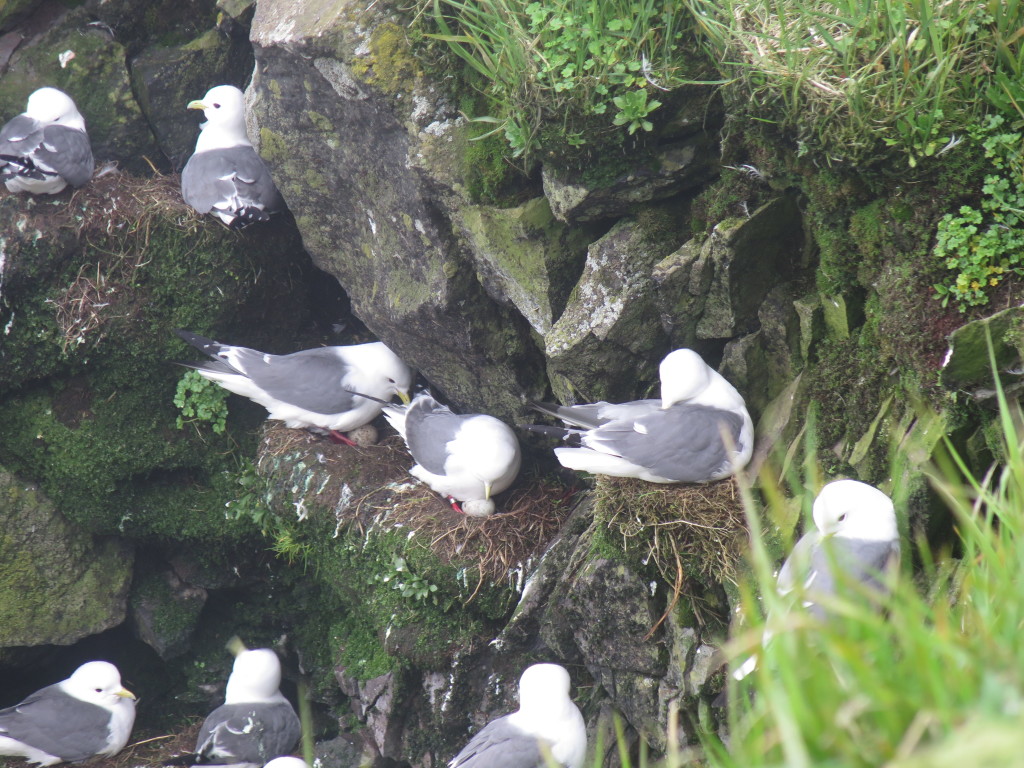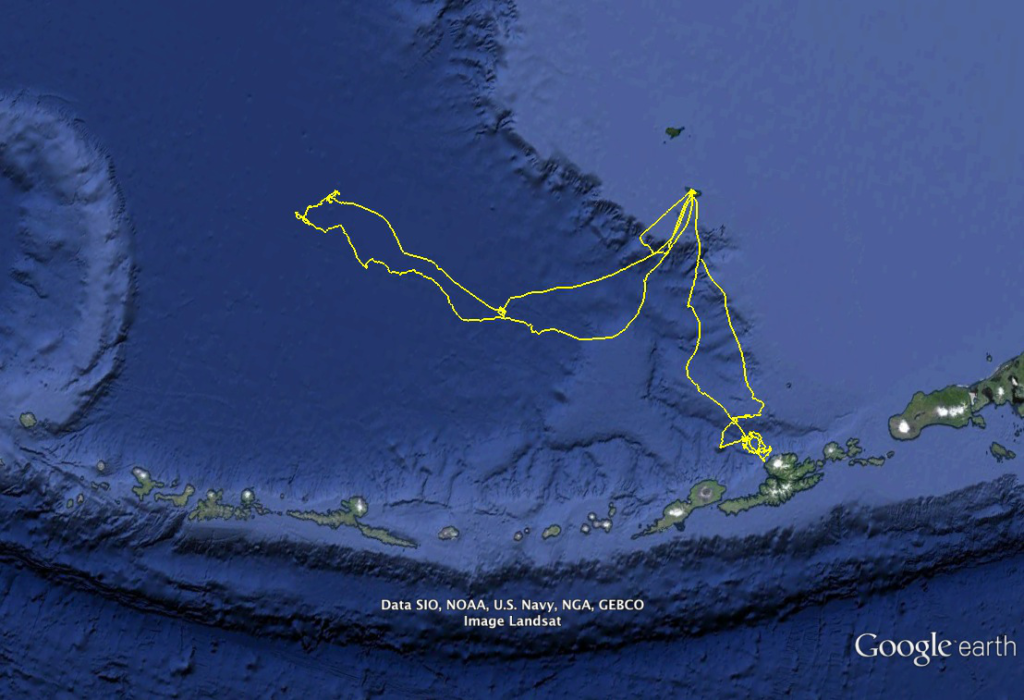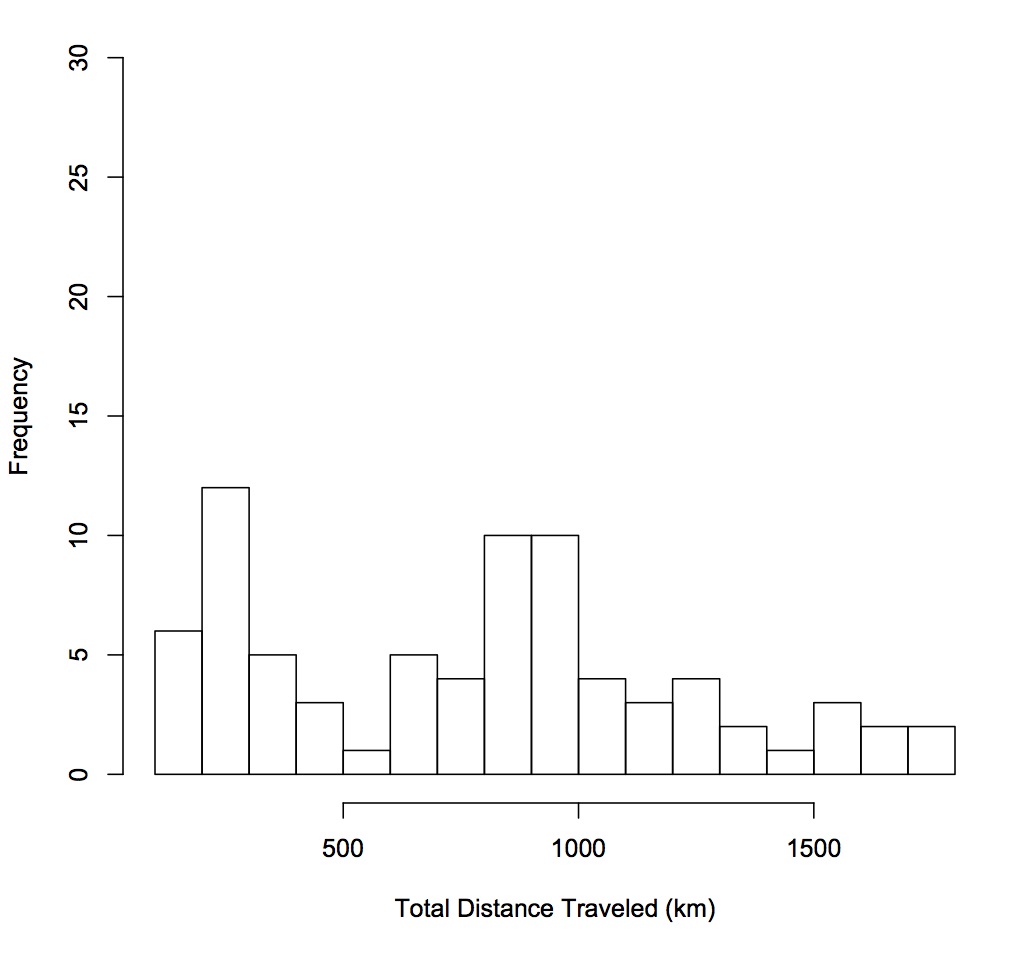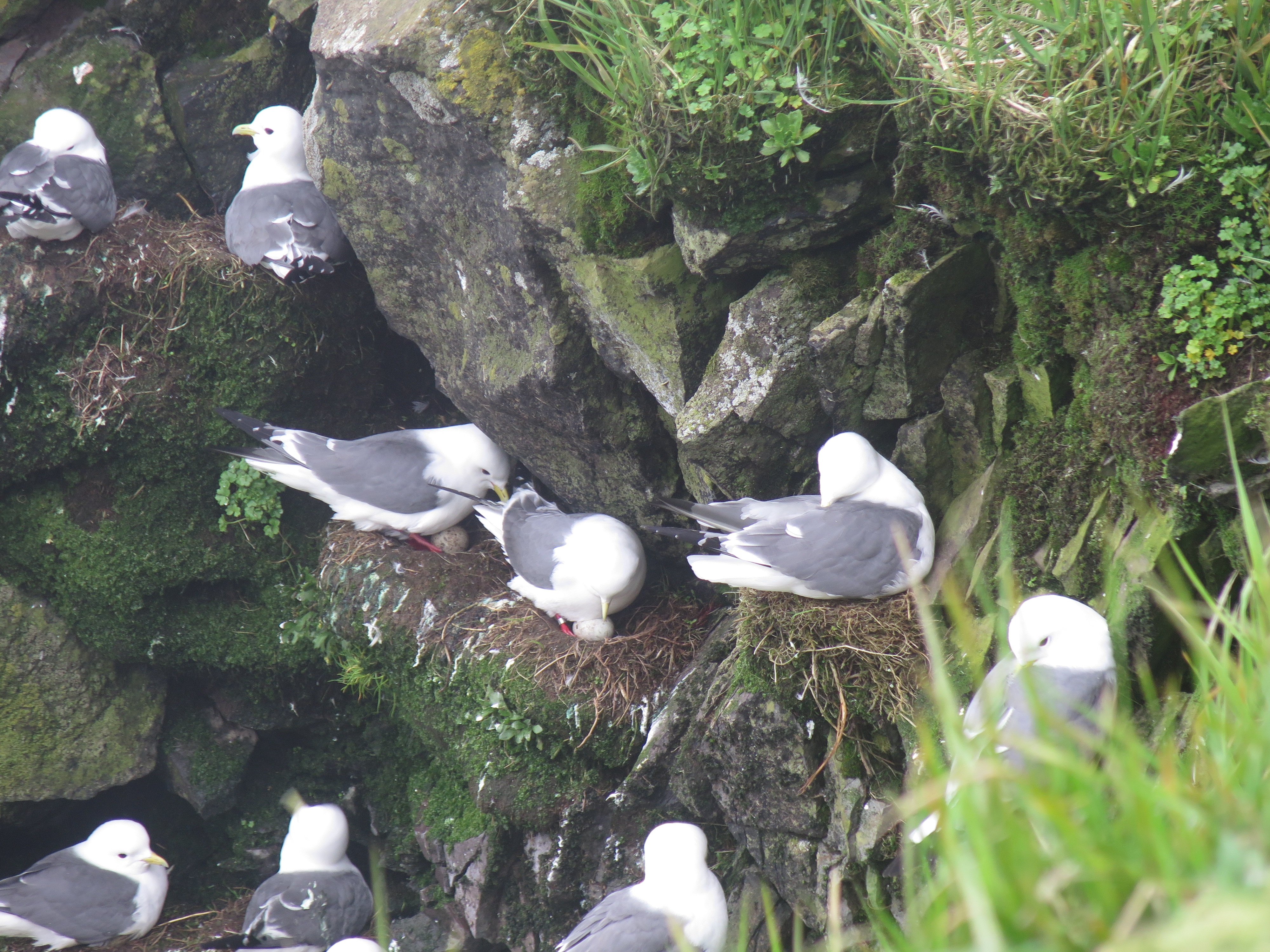What is a central-place forging trip?
Red-legged kittiwakes are birds and therefore they lay eggs to reproduce. And, an egg needs to be kept warm for the embryo to grow and hatch into a chick.
Obviously, seabirds aren’t able to lay eggs out at sea (where their food is). Instead, they need come to land to lay eggs and raise their young every year. So during the breeding season they have to travel from a central-place (their nest) out to sea to find food. These trips are called “central-place foraging trips” because they travel out from a fixed point.
Throughout the incubation and chick rearing periods of the breeding season, the kittiwake parents take turns to leave the colony to find food and stay at the nest to do their share of incubation and chick-brooding duties. So, kittiwake parents take turns making repeated trips from the same place!
Questions for you:
- Do you make any central-place trips in your life?
- Are they for foraging?

Rachael Orben has found that incubating red-legged kittiwakes were making central-place foraging trips that lasted 1.6 days (on average). And, trips were an average distance of 722km, and the longest trip recorded took almost four and a half days!
Sometimes averages can be misleading.
Although red-legged kittiwakes were mostly making long trips sometimes they make much shorter trips!
The plot below shows the GPS track from one bird that made three trips. One short and two long.

To see how often birds made shorter trips, Rachael made a histogram (see below). This plot shows the number of birds that made trips of shorter and longer distance.
Questions for you:
- Can you see the two peaks in distance?
- What do you think the birds were doing at these two most common distances?


